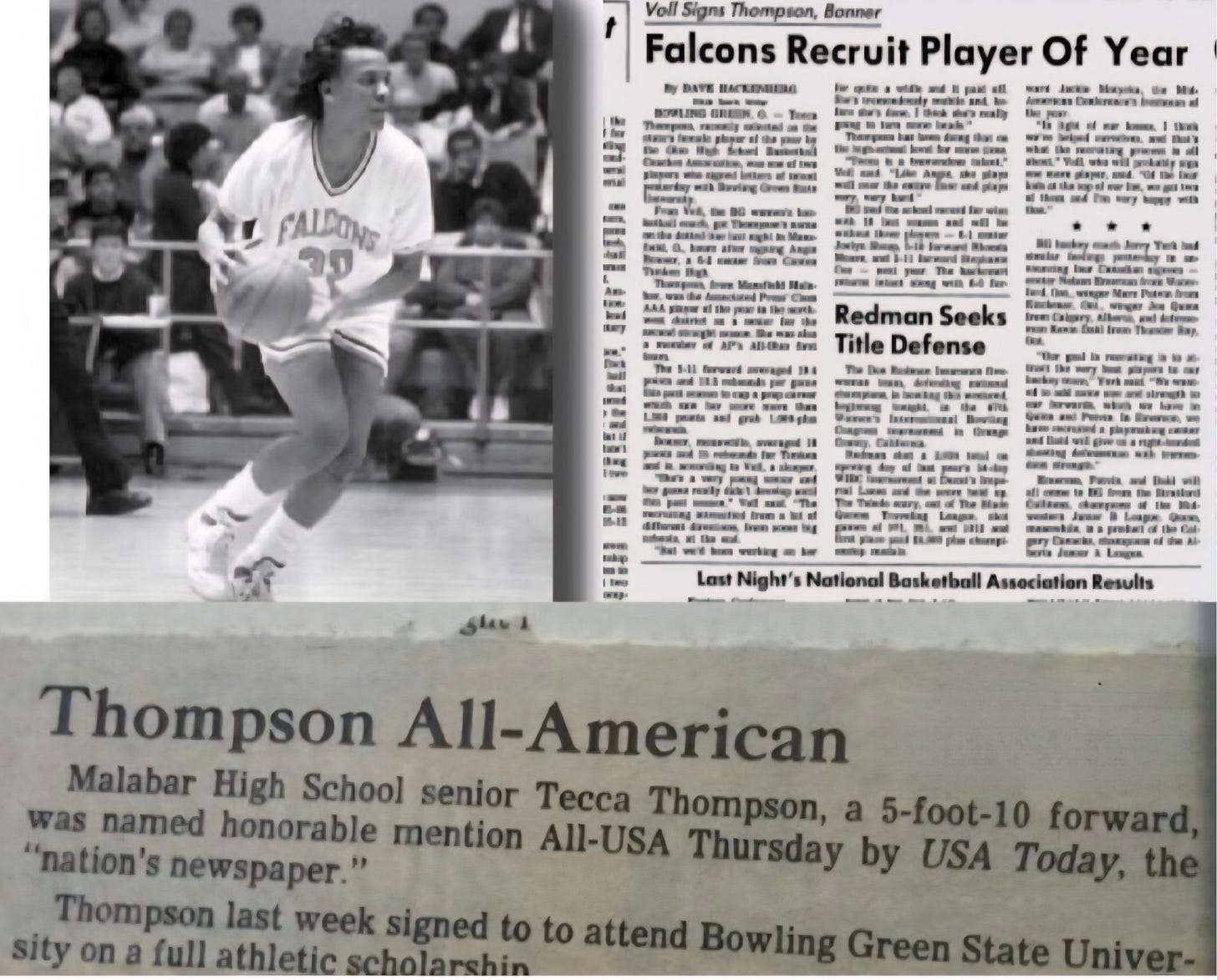When my 13-year-old self first picked up a basketball,
I didn’t know anything about Polyvagal Theory
or how nervous system states get patterned.
I only knew I wanted to be a part of something—
and I needed a way out of my house.
I turned out to be good.
Really good.
And with every bucket, every award, every newspaper interview,
my nervous system clocked safety,
clocked acceptance,
clocked connection.

When I was younger, my body learned that competition and achievement meant safety.
Because achievement was the surest way to be seen.
If I performed well, I wasn’t invisible.
If I excelled, I was praised—
and praise felt like love.
So competition wasn’t just about winning.
It was about belonging.
It was about proving I was worth keeping around.
The pattern worked brilliantly on the court.
But when I left the court and started clocking into the office,
everything shifted.
Every woman I worked with was seen as a competitor.
Every deadline, every project, every assignment—
I expected it to come with accolades,
with celebration.
And when it didn’t,
my nervous system went into overdrive.
I was constantly in fight or flight.
The same pattern that once protected me,
that helped me excel and survive,
didn’t fit my new reality.
It took me years to figure out
that I had an automatic program running in my nervous system.
A program that whispered:
To be loved and accepted, you have to achieve more.
Be the best. Outperform. Excel.
It didn’t just say work harder—
it said strive more.
Win. Win. Win.
And when that formula didn’t work in the office,
I felt depressed.
Confused.
Threatened.
Broken.
Our nervous system—and the narratives that support it—are powerful.
And as it turns out,
none of it was true.
I wasn’t broken.
I was just running an outdated program.
One I had outgrown.
But didn’t yet know how to leave behind.
So even when I turned toward healing,
I carried that same nervous system script with me.
Every healing journey became another competition.
Another makeover.
Another gym membership.
Another attempt to fight my way into wholeness.
Let’s slow this conversation down for a minute.
There’s nothing wrong with moving your body.
Nothing wrong with strength training or reshaping your life.
That’s not what I’m saying.
What I’m naming is the mindset that told me
healing had to be hard to be real.
That I had to earn my transformation.
That pain was proof I was doing it right.
I wasn’t just working out—
I was pushing through grueling routines
with a voice in my head saying:
I will overcome.
I will win.
I will be better than… them.
Who “they” were changed depending on the season.
But the feeling was always the same.
A quiet war inside my healing.
A self-inflated competition disguised as growth.
And to my nervous system,
it all felt familiar.
That coupling of pain and progress,
striving and survival—
that’s what I thought healing was supposed to feel like.
It was exhausting—
and no wonder I could never truly heal or sustain the body changes I created during those quests.
Because what needed healing wasn’t my body.
It was my nervous system.
More than that—
it was the pattern that married competition and reward
with safety and connection.
The narrative that told me achievement was the only way to belong.
The script that whispered:
If you win, you are loved. If you rest, you disappear.
And here is the truth my body finally taught me:
healing is not linear.
It is not conquest.
So now, when I speak of healing,
I speak of soft rebellion.
The refusal to heal through violence.
The refusal to treat our wounds like enemies.
I speak of the soft return—
to ourselves,
to rest,
to surrender.
Soft rebellion is the rest and surrender inside of the healing—
to sit with our pain and wounded parts,
to befriend them softly,
but not become them.
This is why I say healing means losing the identity built around pain.
Healing is not a war.
It is the body’s quiet invitation—
to rest,
to surrender,
to remember.
Word of Wisdom
You don’t have to earn your return.
Rest is not a reward.
It’s the way back to yourself.
Reflection Questions
What nervous system patterns have you mistaken for personality, identity, or truth?
Where in your healing have you chased transformation instead of tending to what aches?
What would healing look like if you stopped striving and started listening?
Somatic Cue
Sit or lie down in a supported position.
Place one hand on your belly and one on your chest.
Breathe slowly.
Inhale: “I am safe.”
Exhale: “I can return.”
Feel where your body softens.
No need to force. Just notice.
If your body is asking for more of this,
I’d love to welcome you to a space where we practice it—together.
Invitation
Join me for Black Women Reimagining Rest —
a virtual event where we’ll explore rest as a radical, embodied, and communal practice for Black women.
Together, we’ll talk about what it means to lay down survival and reimagine our relationship to rest.
Not as a reward.
Not as recovery.
But as a way of returning home to ourselves.
You don’t have to do it alone.
You don’t have to figure it all out first.
Click here to register for Black Women Reimagining Rest.
Come be held in community.
Come as you are.
This work is sustained by the community. If this spoke to your spirit, I welcome your support.🫶🏾




